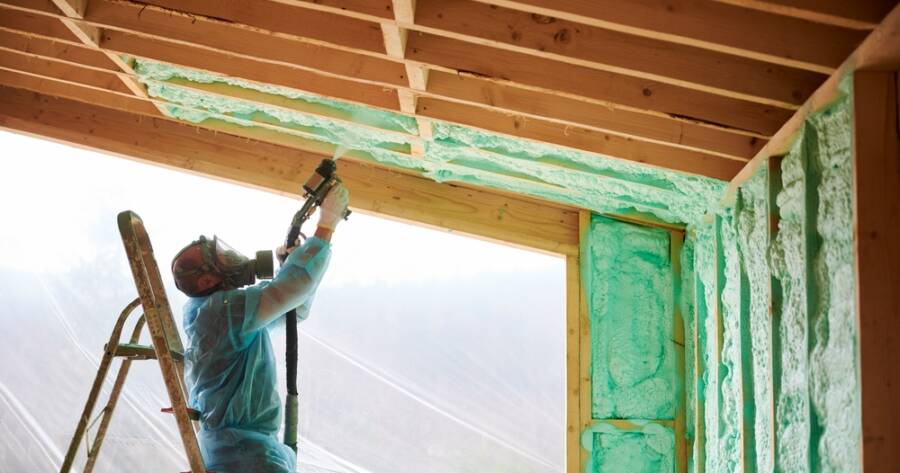Loft insulation is a crucial aspect of home maintenance often overlooked by homeowners in the United States. As energy efficiency becomes a priority for many, understanding the complexities of loft insulation is essential. This article delves into the costs, various methods of insulation, and potential financial assistance programs that might be available. By exploring these elements, homeowners can make informed decisions that could lead to significant savings on energy bills and contribute positively to environmental sustainability.
Understanding the Costs of Loft Insulation
When considering loft insulation, homeowners are naturally concerned about costs. The initial expense can vary significantly based on the method chosen, the size of the loft, and regional labor rates. On average, insulating a loft can range from $1,700 to $3,000 for a typical home, although these prices can fluctuate. It’s crucial to consider potential savings on energy bills, as proper insulation can lead to reduced heating and cooling costs.
Some estimate that energy savings might recoup the initial investment within a few years, although this depends heavily on individual energy use and local climate conditions. Additionally, homeowners should be aware of potential additional costs. Older lofts may require cleaning, repairs, or removal of old insulation materials, each carrying its own price tag. Consulting with a few contractors for detailed quotes is advisable to get an accurate estimate tailored to specific needs.
Exploring Insulation Methods
Selecting the right method for loft insulation is another aspect where homeowners can benefit from informed decision-making. There are several options available, each with its own set of advantages and considerations.
Blanket Insulation
This is one of the most common forms of loft insulation, often made from fiberglass, mineral wool, or natural fibers. Its appeal lies in its ease of installation, making it suitable for DIY enthusiasts. However, the effectiveness can vary, and professional installation might ensure a better fit and finish.
Blown-In Insulation
Particularly suitable for hard-to-reach areas, blown-in insulation involves using a machine to blow loose material into the loft space. While offering good coverage, this method might require professional help to ensure even distribution and optimal insulating performance.
Spray Foam Insulation
A more modern approach, spray foam insulation involves spraying a chemical solution that expands and hardens into place. This method is typically very effective at creating an airtight seal but can be more costly compared to other options. Its suitability may depend on the specific characteristics of the loft space and existing ventilation systems.
Considering Health and Environmental Impacts
When choosing insulation materials, health and environmental impacts should be considered. Materials like fiberglass may release particles that could pose a respiratory hazard if not handled properly. Homeowners should always ensure adequate protective measures and ventilation during installation.
Additionally, the environmental impact of materials is worth considering. Some options, like cellulose insulation, are created from recycled materials and could have a lower environmental footprint than alternatives. Decision-makers are encouraged to weigh these factors along with performance and cost considerations.
Financial Assistance Programs for Loft Insulation
Given the potential high costs of loft insulation, homeowners may be relieved to find several financial assistance programs available. These can vary widely depending on location and eligibility criteria.
Federal and State Programs
The Federal Government occasionally offers tax credits for energy efficiency improvements, which could include loft insulation projects. Similarly, many states offer rebates or low-interest loans designed to encourage energy savings. Checking with local state energy offices can provide up-to-date information on available programs.
Utility Company Rebates
Several utility companies offer rebates or financial incentives to customers who undertake energy efficiency projects. These programs are intended to reduce energy demand and may provide partial reimbursement or bill credits for insulation projects. It’s advisable to contact your utility provider to explore these options.
Non-Profit and Community-Based Programs
Some non-profit organizations focus on facilitating home energy efficiency and may offer assistance or grants tailored to low-income households. These programs aim to improve living conditions while reducing energy costs and often come with specific eligibility criteria that need to be met.
Making an Informed Decision
At the end of the day, investing in loft insulation could be a wise decision for homeowners looking to reduce their environmental footprint and energy bills. While the upfront costs might seem daunting, potential savings and available assistance programs could alleviate some of that financial burden.
It’s crucial for homeowners to explore all options, seek professional advice when needed, and carefully weigh the pros and cons of each insulation method. By taking these steps, they might find the best solution tailored to their home’s specific needs, contributing to both personal financial health and larger environmental goals.

